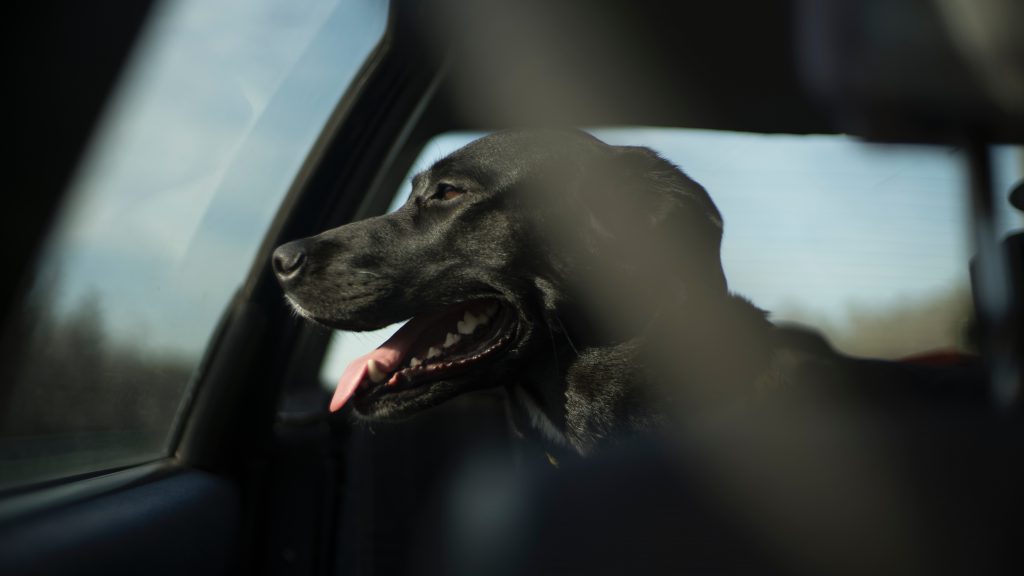
Over half the UK population has a pet. We’re a nation of animal lovers, so when we’re travelling with our pets, we want to keep those furry friends safe.
From the Highway Code to general good practice on keeping everyone in your vehicle safe, we’ve put together some key tips for driving with pets.
What’s the Highway Code guidance on driving with pets?
Interestingly, horses are the main animal mentioned in the Highway Code. If you’re pulling a horse truck, we recommendreading through the rules here.
After horses, dogs are second on the list (sorry cat people).
For anyone bringing an animal into a vehicle (that’s either a car or a people carrier), Rule 57 is the most important. It states:
“When in a vehicle make sure dogs or other animals are suitably restrained so they cannot distract you while you are driving or injure you, or themselves, if you stop quickly. A seat belt harness, pet carrier, dog cage or dog guard are ways of restraining animals in cars.”
Making sure your pet is properly secured is important for their safety as well as your own. In an emergency, you don’t want them to become panicked or be unrestrained.
We have various pet harnesses and hammocks in the Green Flag Shop, so to keep your pet restrained in a safe way,check them outhere.
How do I know if my pet’s okay to travel?
It’s always best to practise driving with pets. Start off with just sitting in the car to make sure your pet feels comfortable. Build up to a few short trips to make sure they’re calm before any longer journeys.
It’s also important to make sure your pet is microchipped and has an ID tag. It’s a legal requirement for dogs to be microchipped, so if you’re unsure, check with your vet.
Having some form of ID for your pet could help if they ever get lost while you’re on a journey.
Can I drive long distances with my pet?
Whatever animal you have, it’s important to take regular breaks on longer journeys. This is especially important if they’re in a crate.
Before setting off, plan extra stops to check your pet’s hydrated, fed, medicated if needed, and can stretch all their legs.
Now this one should go without saying, but carry spare poo bags, especially if your pet’s a nervous traveller. If you take a break and your pet makes any mess, be sure to clean it up.
Make sure you bring plenty of food and water for any journey. If your pet needs medication, pack more than you need, just in case of emergency.
Most of this advice is good for us humans as well as pets by the way. The poo bag one not so much, but the food and water, definitely.
Can I let my dog hang their head out the window?
It may be the classic image used for most blogs on this topic, but the best advice is no.
Any pet with its head out of a window could get debris in its eyes, leading to infections. And if they have enough room to jump out, itcouldhappen, which could cause a lot of trouble.
Having the window cracked for air circulation is absolutely fine, especially on a hot day. But make sure it’s not low enough for pets to get their face out.
Can I leave my pet in my vehicle?
No. It can be incredibly unsafe and could lead to trouble for you.
The temperature in your car can increase incredibly quickly. Even when it’s just 22 degrees outside, the inside temperature could reach 47 degrees in one hour. Leaving a pet in a car even for a few minutes could have deadly consequences.
Parking in the shade, opening a window (which can be unsafe), or giving them water isn’t a solution.
The public can call the police if they see a dog in distress. Don’t risk ending up with window repair fees, vet bills, or worse.
There’s more guidance about what to do insteadon the RSPCA’s website here.
Do I need pet insurance to take my pet in a vehicle?
It’s not a legal requirement to have pet insurance while driving with a pet. But you should check your vehicle insurance policy to make sure you’re following guidance. If your pet isn’t restrained and creates a distraction, you may not be able to claim insurance.
Pet insurance is always a good idea, for extra peace of mind (especially if you’re heading on a longer journey).
What do I do with my pet if I break down?
The Highway Code suggests dogs are kept in the car if you break down, unless it’s not possible. If you do bring pets out of the car, make sure they’re always restrained. If they run into traffic, they could risk hurting themselves or other road users.
When you contact your breakdown provider for help, make sure you let them know you have a pet. They may need to send specific people to help you.
For more information about travelling with pets, you can take a look atthe PDSA website.
你需要小心开车时with pets, but with planning and precautions, you can have a relaxed, safe journey.
我们所有的宠物旅行设备,包括冷杉t aid kit,check out the Green Flag Shop.
